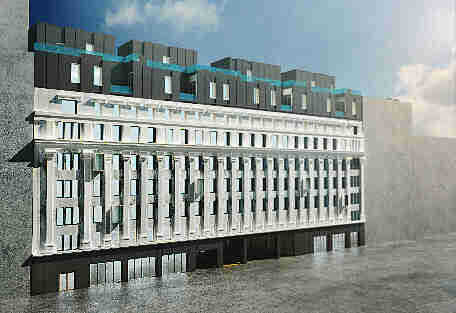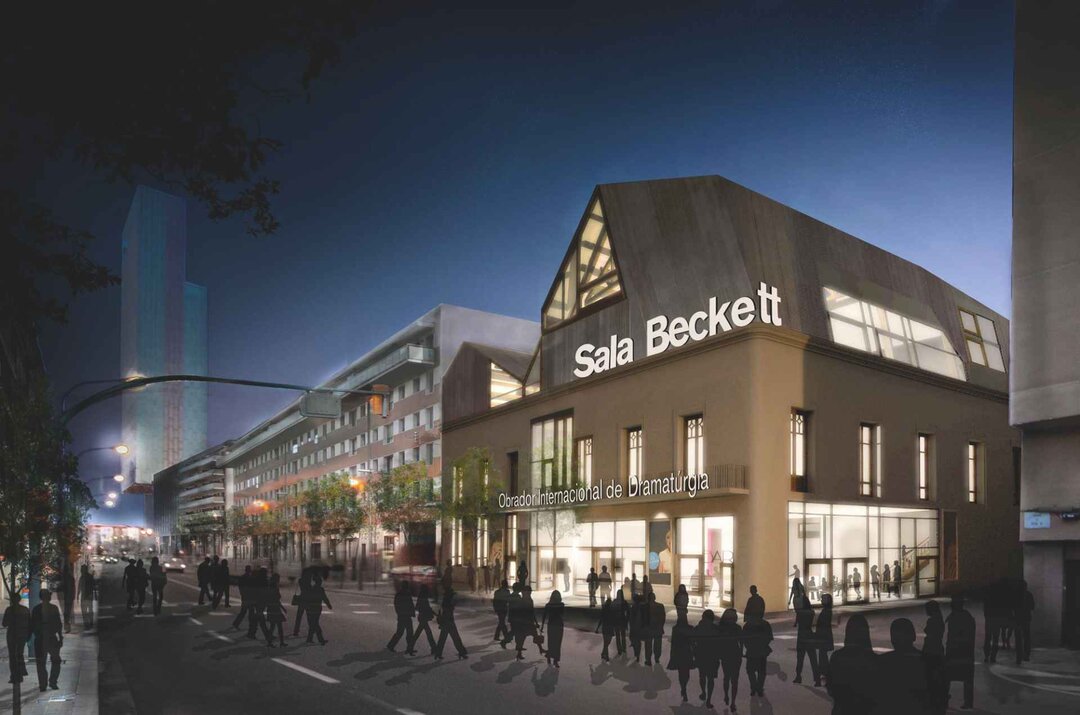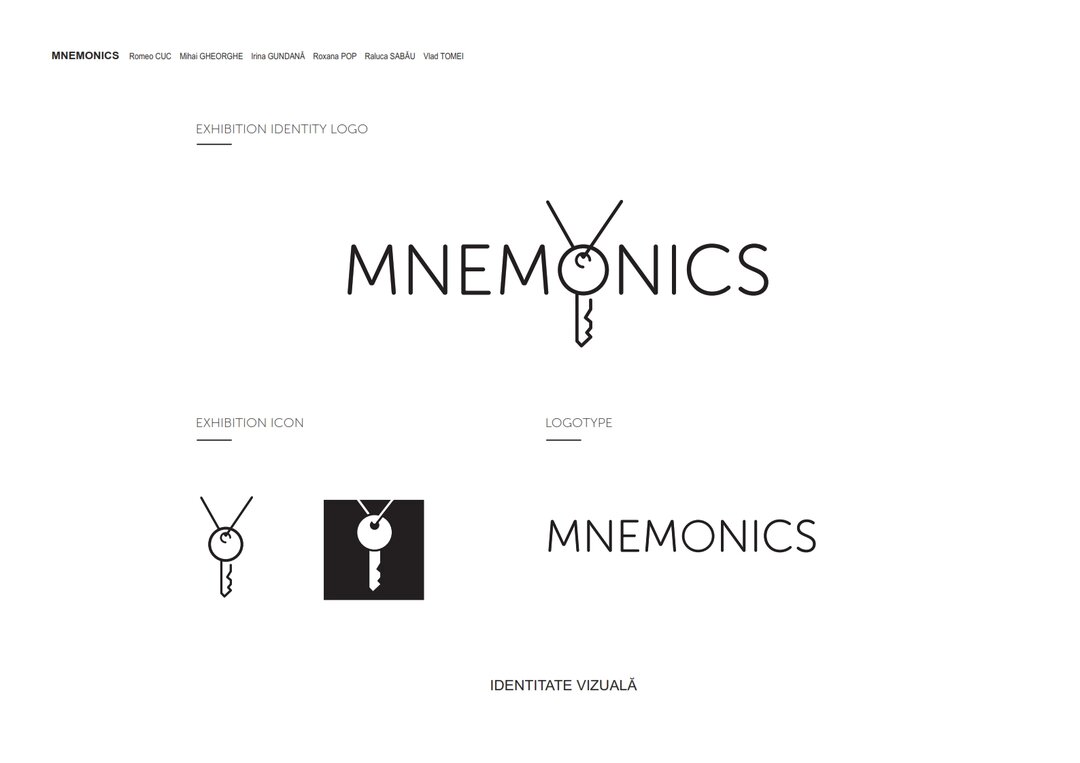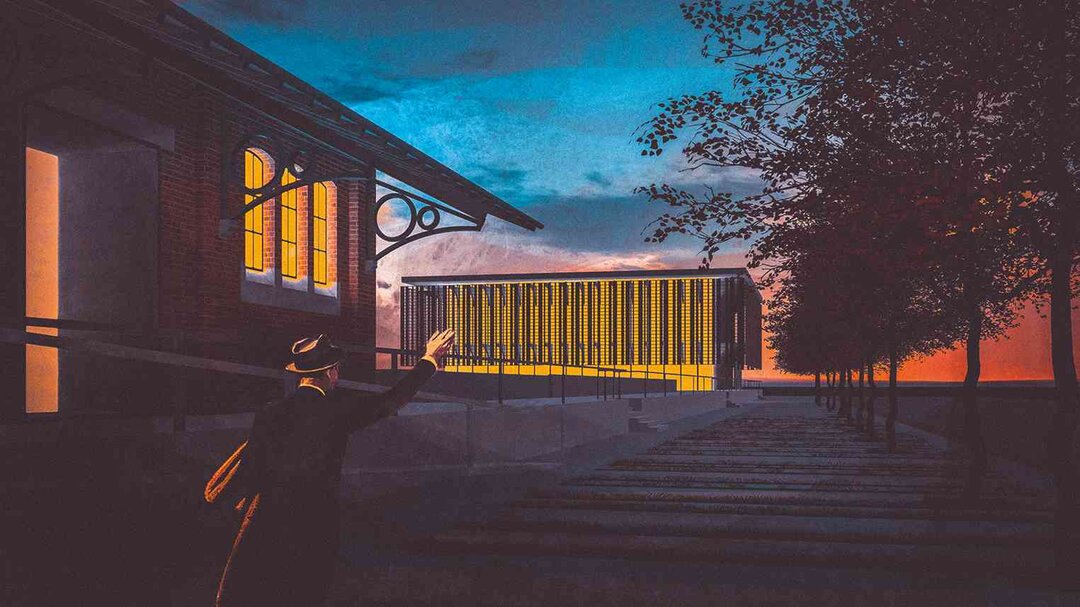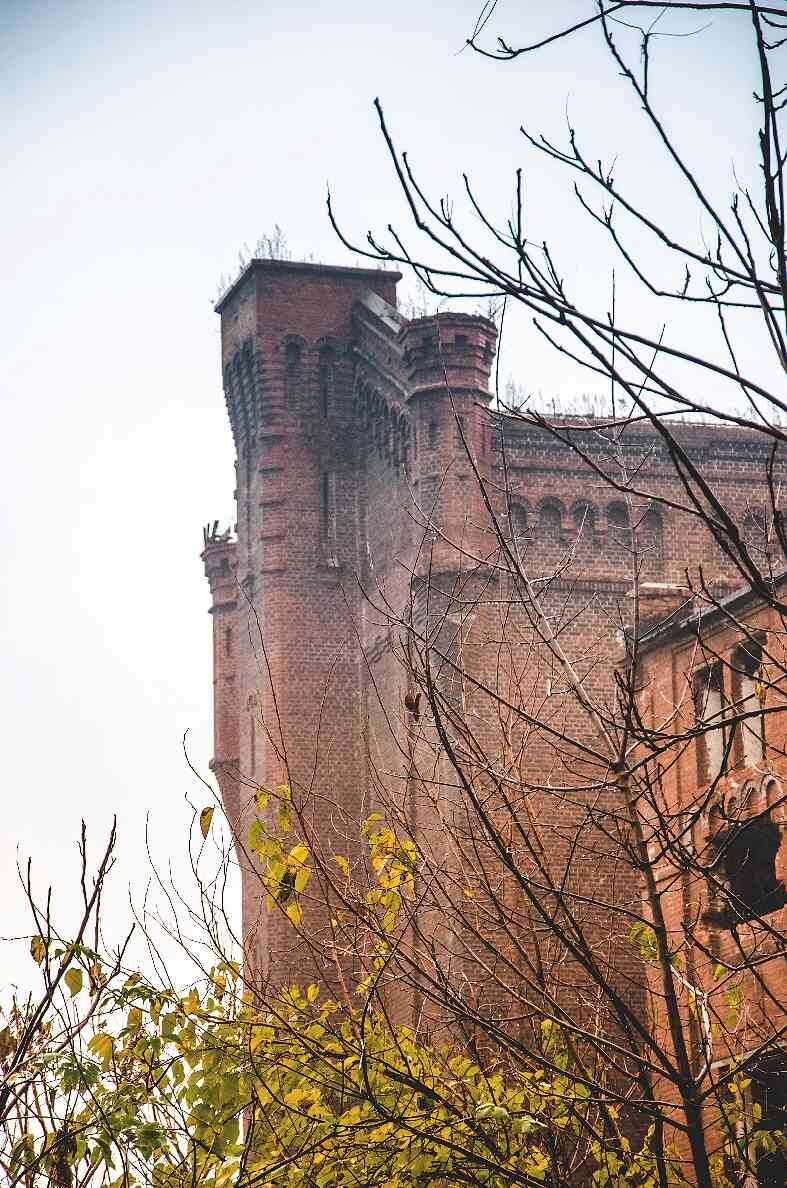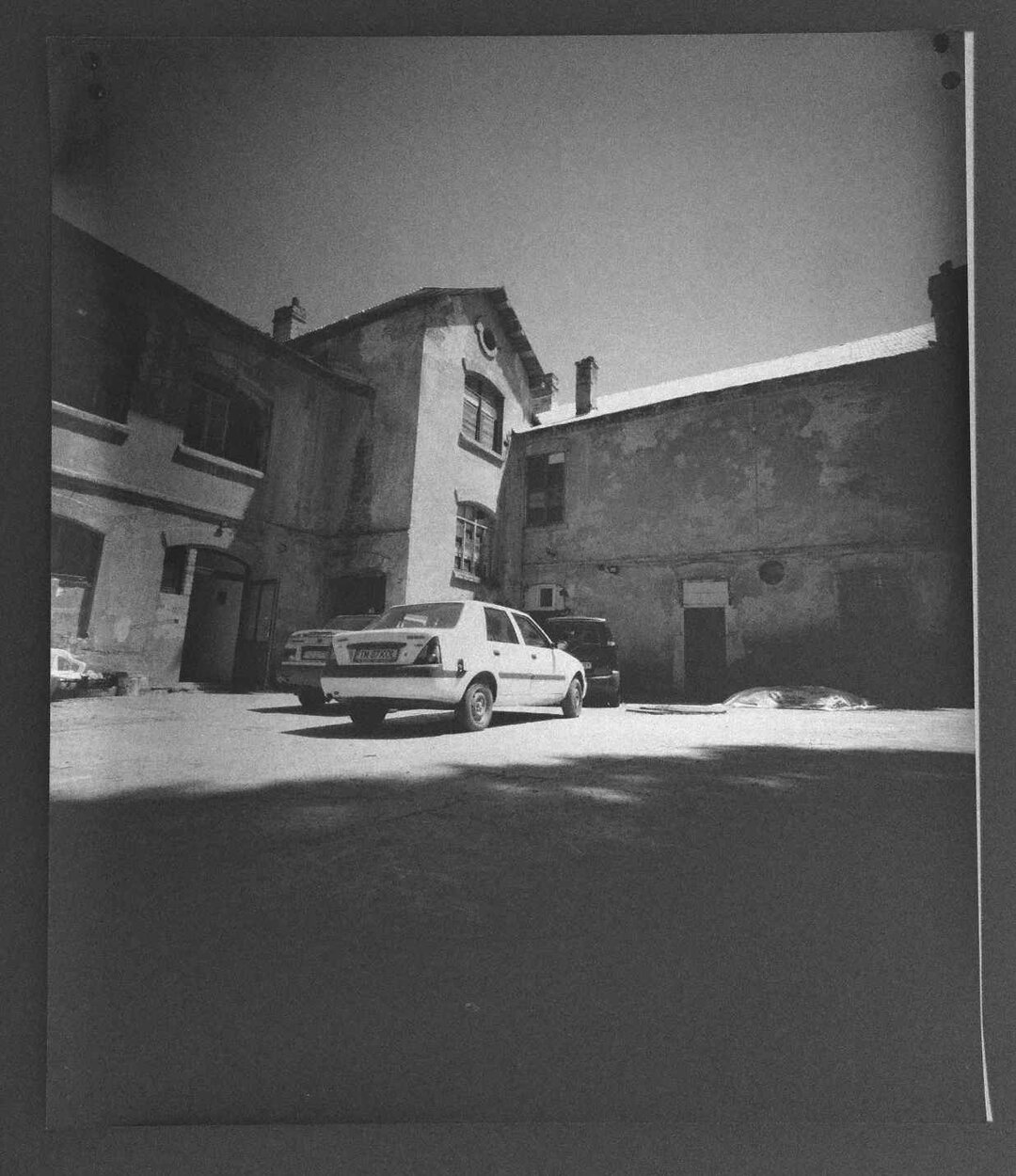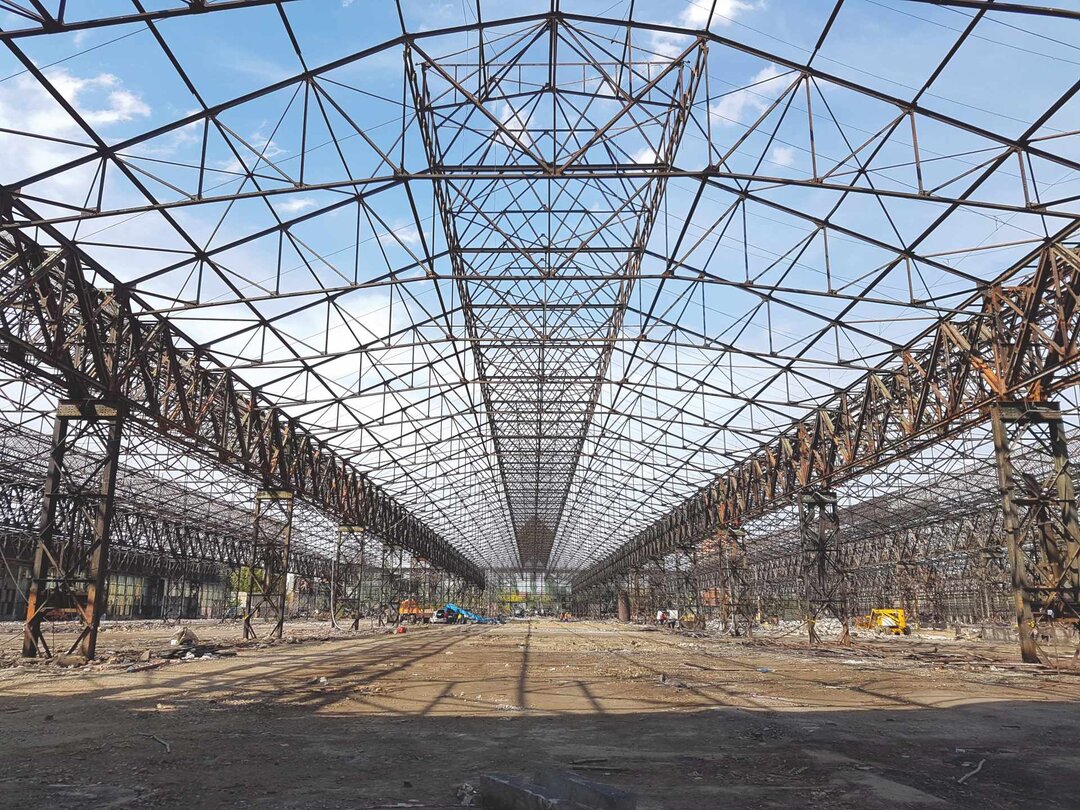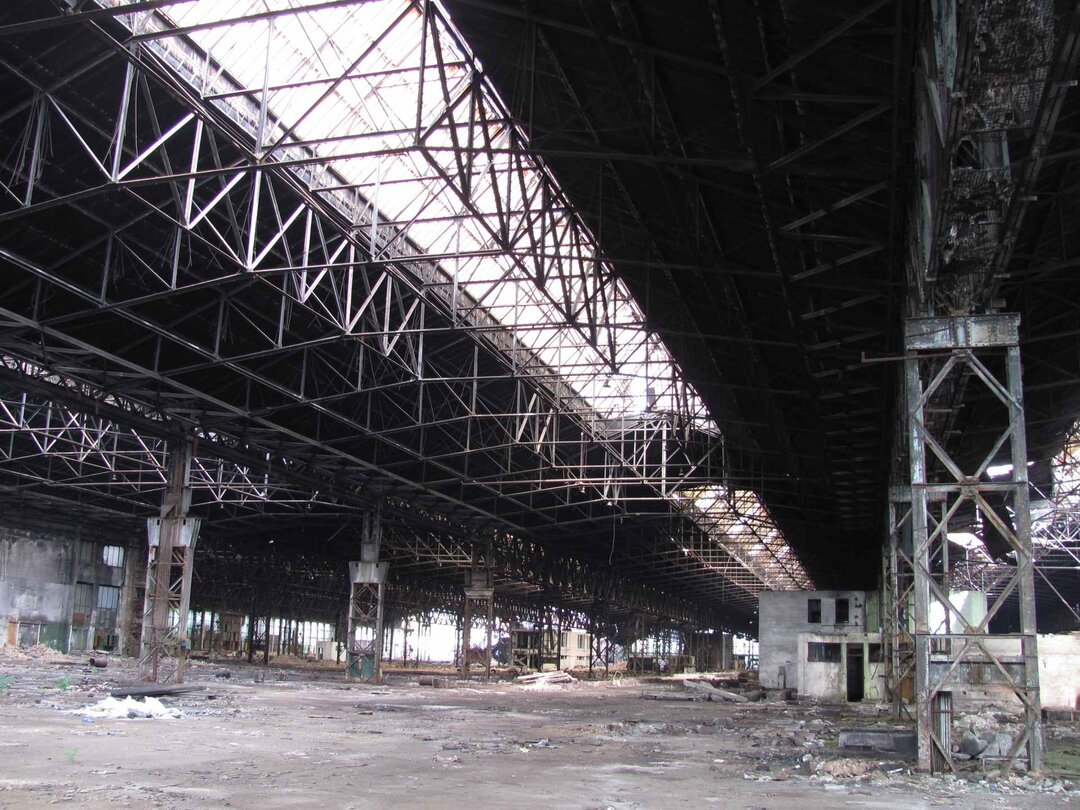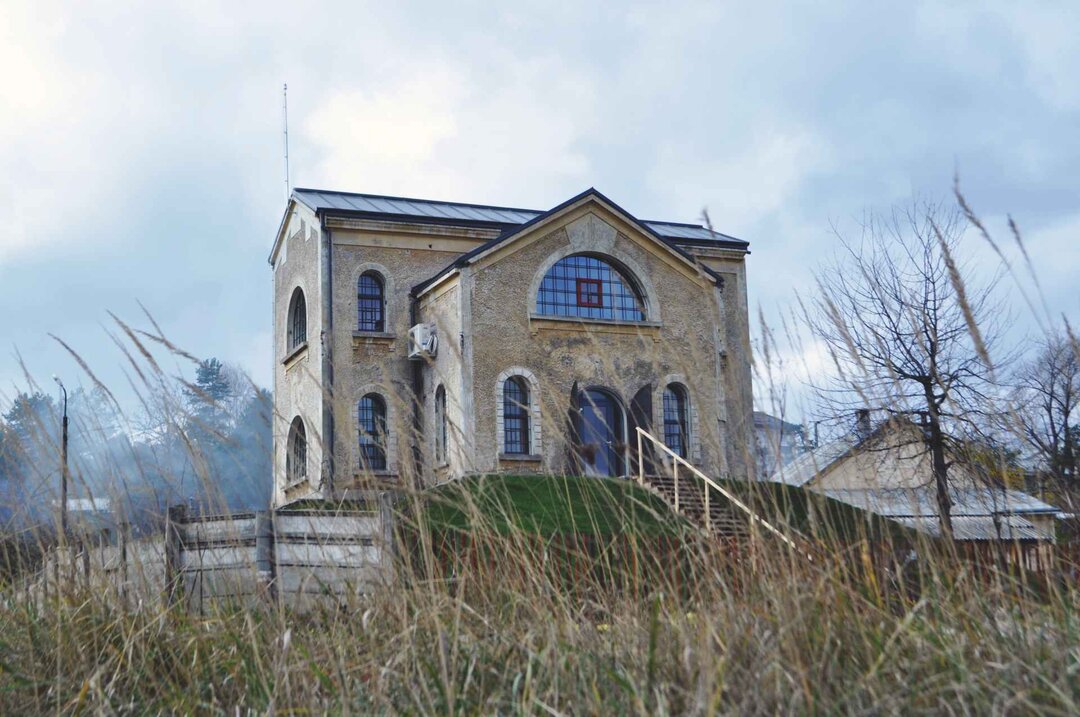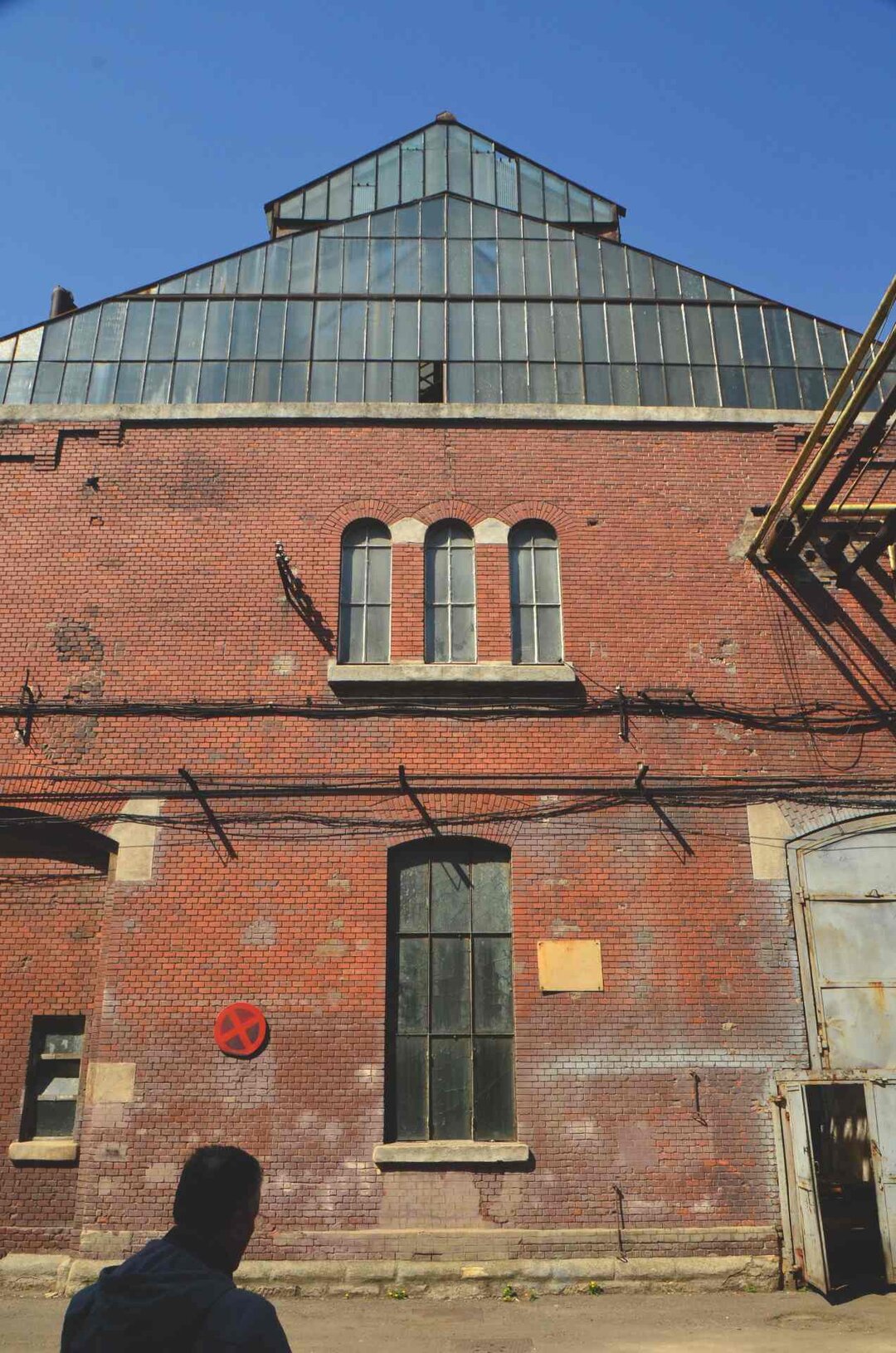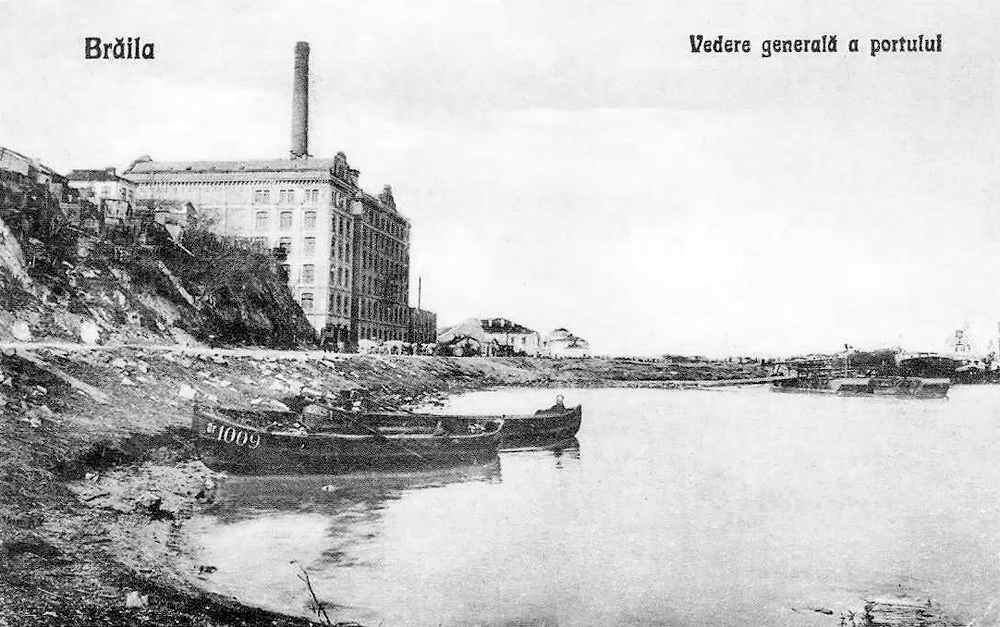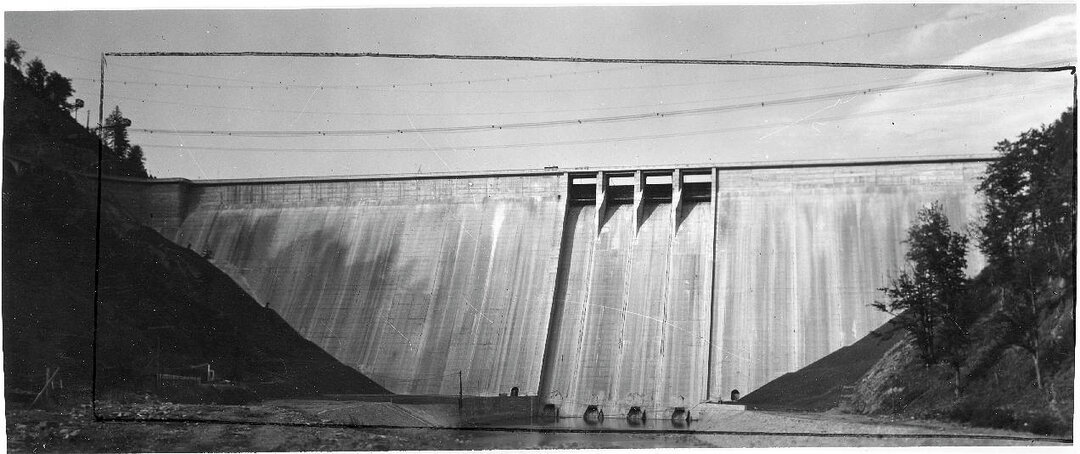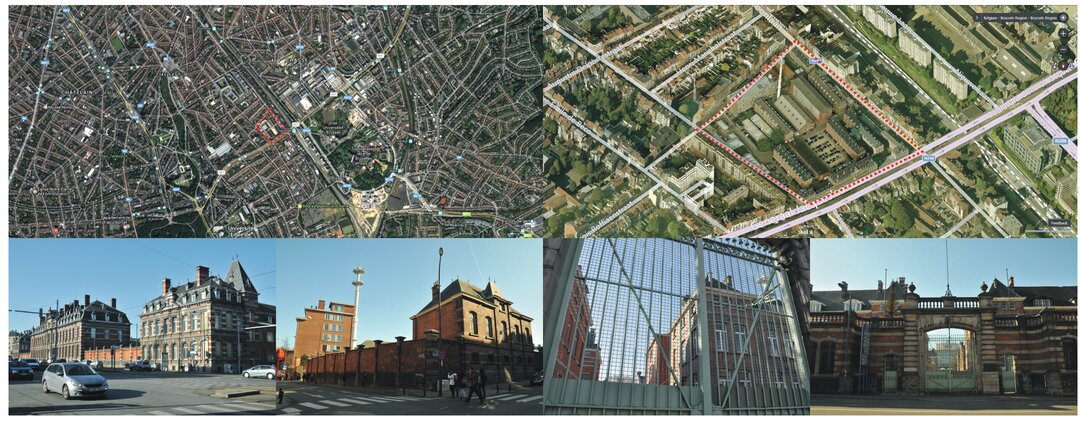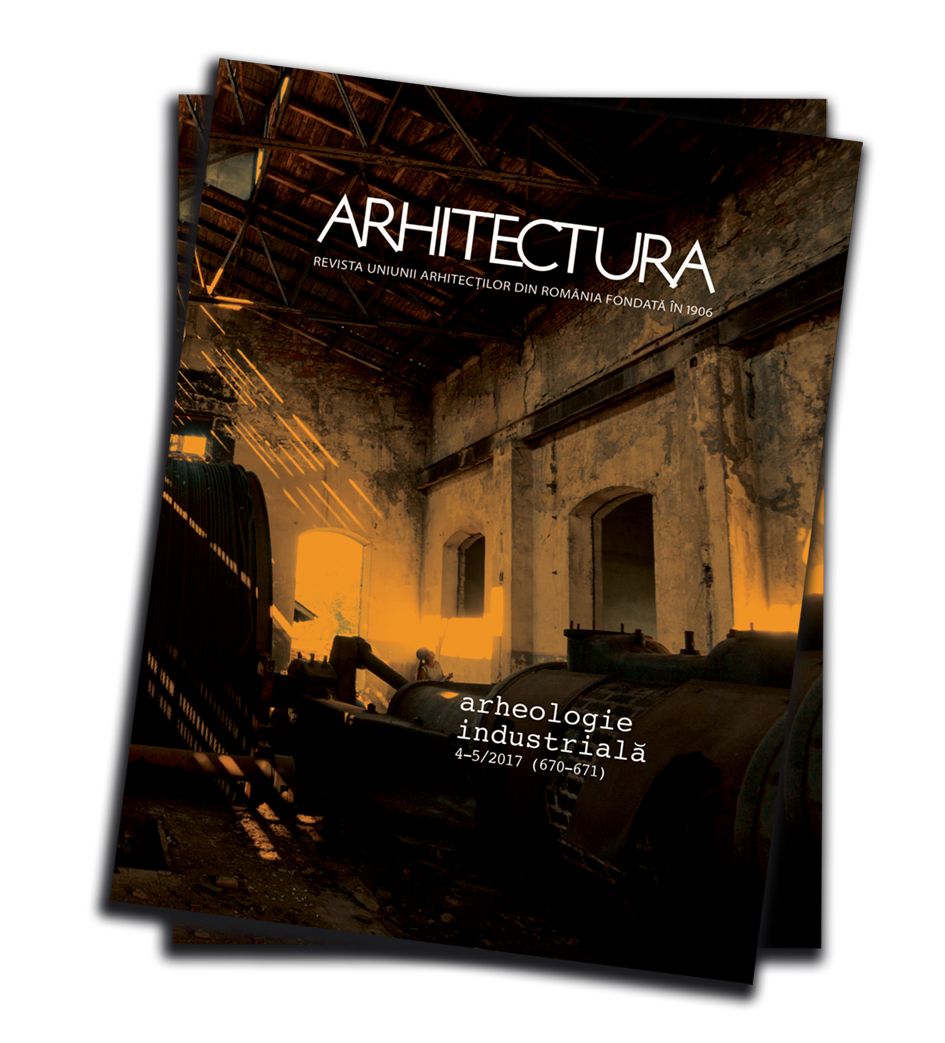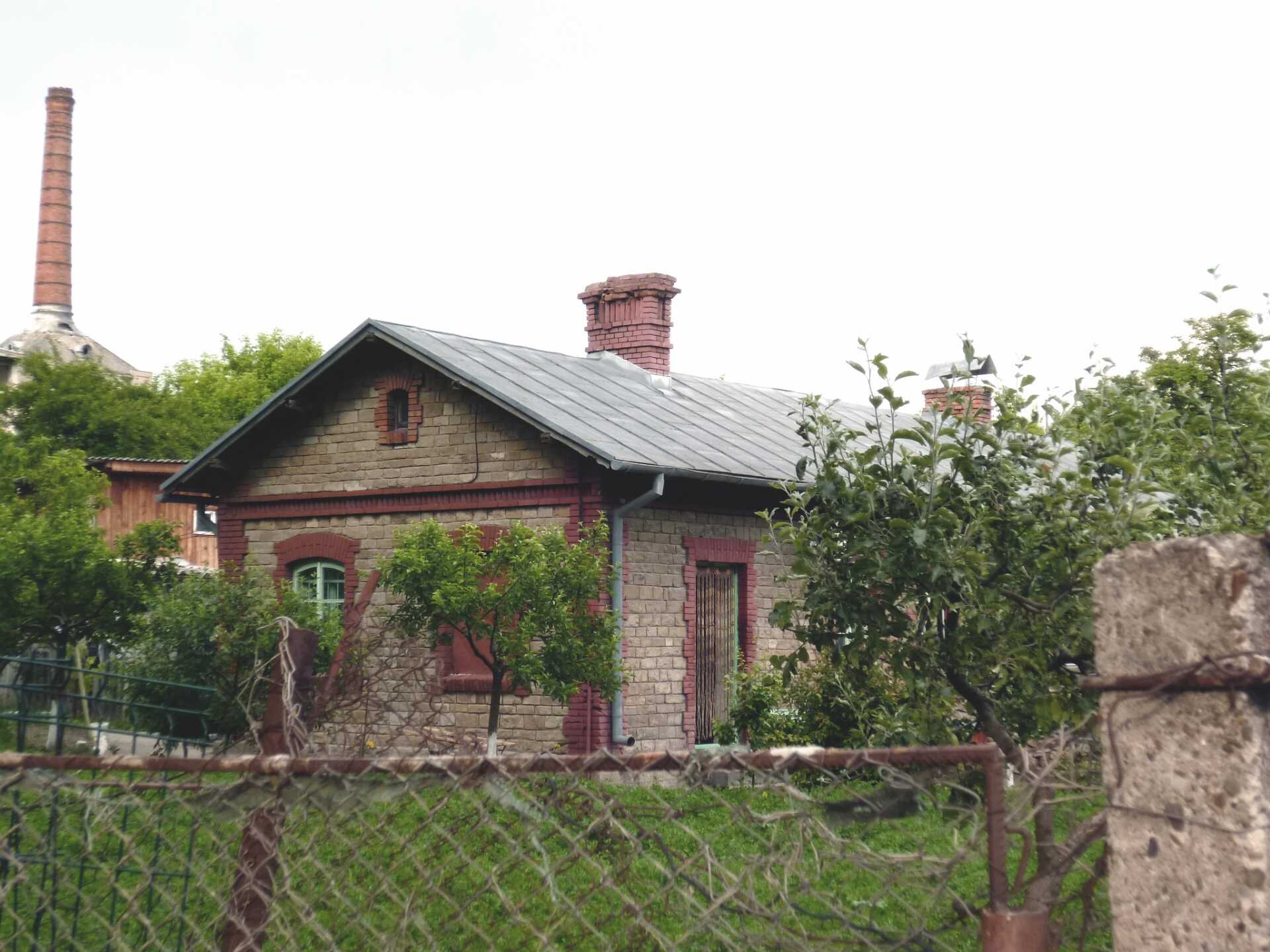
The Industrial Heritage from Bucovina. Preservation and Valorisation at a Territorial Scale
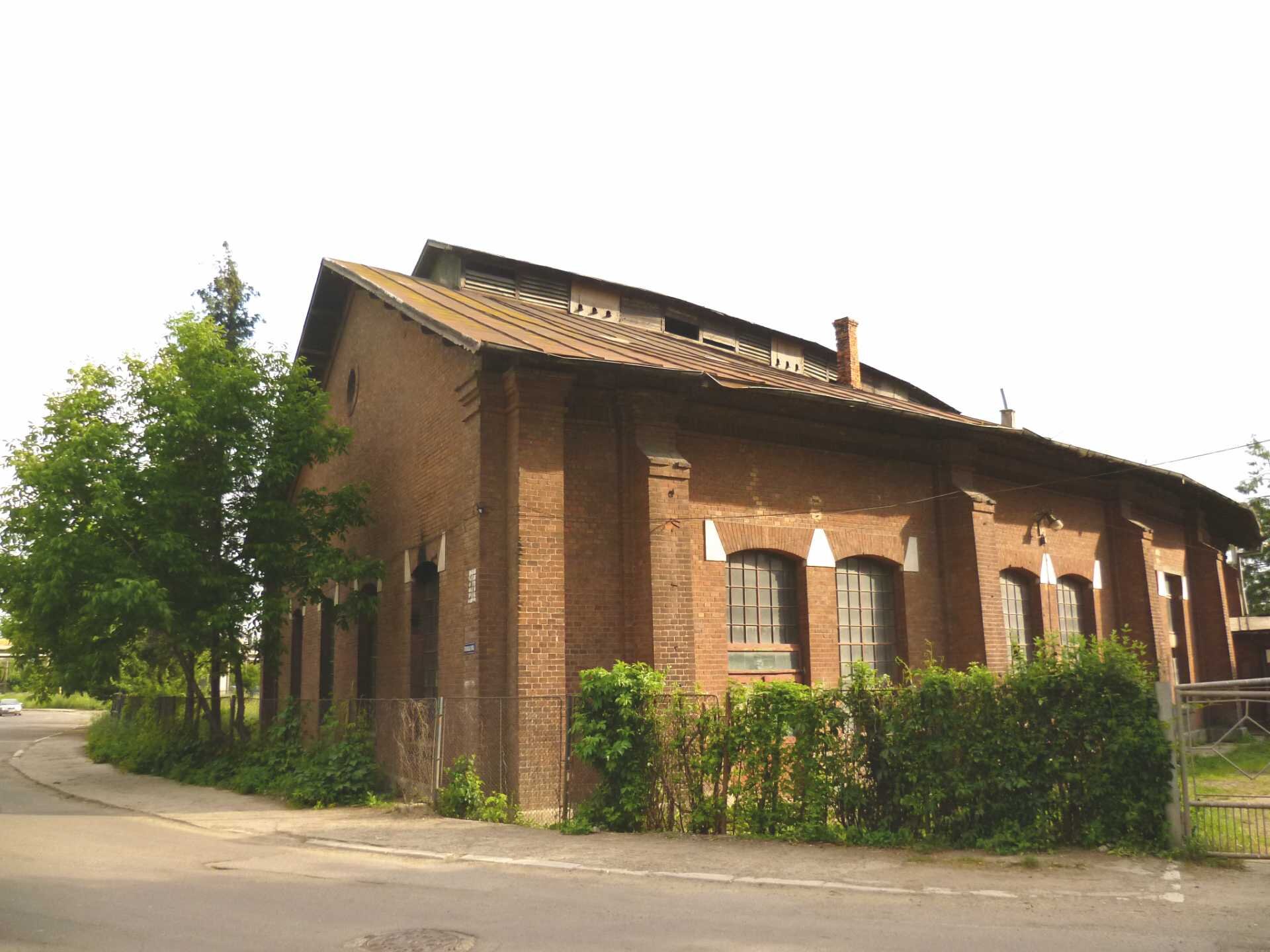
text and photo: Adrian Nicolae CIOANGHER
 Today the protection and valorization of industrial heritage are essential for defining urban and territorial development policies. The countries of Western Europe, with a long tradition in the secondary sector, are committed to preserving the industrial character of their cities and adjacent territories. Even if the natural trend is towards a transition towards the tertiary sector, the identity of industrial sites offers new perspectives for the development of urban spaces and territories. The re-use of industrial sites and buildings allows the development of important new activities and, at the same time, ensures that the identity of spaces that are representative of communities is preserved. The variety of associated activities and of spaces subject to functional conversion processes today provide the conditions for urban and territorial development.
Today the protection and valorization of industrial heritage are essential for defining urban and territorial development policies. The countries of Western Europe, with a long tradition in the secondary sector, are committed to preserving the industrial character of their cities and adjacent territories. Even if the natural trend is towards a transition towards the tertiary sector, the identity of industrial sites offers new perspectives for the development of urban spaces and territories. The re-use of industrial sites and buildings allows the development of important new activities and, at the same time, ensures that the identity of spaces that are representative of communities is preserved. The variety of associated activities and of spaces subject to functional conversion processes today provide the conditions for urban and territorial development.
In Romania, there has been an almost insignificant process of conversion of industrial sites, the vast majority of which have either been demolished with a view to developing new activities or abandoned and unused. The industrial heritage in Bukovina (including its northern part in Ukraine) is also in this situation. The lack of concrete protection measures leads to their degradation and real estate interests pose a real threat to their physical integrity. Perhaps the most significant danger is the lack of an inventory of all industrial sites and, in direct correlation with this, the lack of specialized studies that would highlight their real value.
Industrial and utilitarian heritage in Bucovina
Context of the development of productive activities
In the period 1774-1940, to which we refer in this article, it can be seen that the territory of Bucovina underwent a development of productive activities in accordance with the development policies imposed by the authorities of the Habsburg Empire and, later, after 1918, by the Kingdom of Romania.
One of the most important resources which contributed particularly to the economic development of this area was wood, which facilitated the modernization of the network of settlements and infrastructure, while at the same time constituting an important source of energy for the production and exploitation facilities.
The productive activities developed within the territory took into account two important criteria - the existence of resources that could be exploited and the level of development of the localities - which led to a certain specialization and concentration of activities:
* in the western (mountainous) area, industries were located related to the exploitation of subsoil resources - rich deposits of iron ore, manganese, lead, silver, silver, copper, etc. - and to the exploitation and processing of wood - important forest resources.
*In the east (foothills and hills), the possibilities for agricultural development have led to the location of the food industry. For example, an important resource for the development of alcohol factories was potatoes, and the development of sugar beet cultivation led to the construction of important sugar factories, which provided for consumption locally and in the neighboring areas. The most important breweries and mills were also located here.
However, this specialization did not preclude the intermingling of types of activity from one area to another, depending on local needs. Thus, slaughterhouses, sausage factories, dairies, milk processing plants, mills, etc. were built in the west, while in the east, sawmills, furniture factories, metal processing plants, foundries, etc. were developed.
An important criterion for the localization of productive activities was the level of development of localities. Thus, in the period under study, the administration of the Habsburg Empire stimulated the economy and the localization of some craftsmen by granting the status of town (fair) and organizing important annual fairs. Migration and colonization processes, in particular the migration of craftsmen from other parts of the empire, contributed to the development of craft and later industrial activities, and ethnic mixing supported the development of urban centres over time.
Within urban centers, an important location criterion for productive activities was accessibility. This is why, until the development of rail infrastructure, major roads were preferred as they provided links across the territory. The presence of railroads stimulated the development of industrial activities, which increased their allocated land area and production capacity. The city of Chernivtsi is perhaps the most representative example in this respect, as the location of most of the industrial objectives identified so far (from that period) was conditioned by access to the railway infrastructure.
 North and South Bucovina. Development constraints and elements of potential
North and South Bucovina. Development constraints and elements of potential
The overall development of Bucovina between 1774 and 1940 was favored by a strong legislative and institutional framework, but also by a general context of stability that created the premises for a steady evolution. All these factors favored economic growth and the steady development of industrial activities, processes that had positive effects on the network of settlements, infrastructure and the built environment.
In contrast to this period of unified development (within a generally stable framework), after 1940, with the occupation of the northern part of Bukovina by the Red Army, there was a decline, with negative economic and social effects. The massacre at Fântâna Albă and the forced deportations in 1941 led to a dramatic decrease in the number of Romanian and other ethnic populations, destabilizing these areas and leading to a reorientation of development in a different direction.
The development of the network of settlements and the industrial development policy in Southern Bukovina were affected by Russia's sphere of influence, but this did not lead to a
radical reorientation of industrial activities. The exploitation of local resources and the development of a tradition in certain sectors of production allowed the continuation of profitable activities - mining, wood processing, building materials or food processing.
A similar process took place in the northern part of Bucovina, with the diversification of activities affecting the industrial specialization of the different localities to a lesser extent. For example, in the city of Chernivtsi (the most representative for industrial development in Bukovina), most of the initial industrial activities were continued and even developed. The metallurgical industry (machine-building in particular) is among the most important industrial branches developed in parallel with the traditional activities, which were continued.
However, there were also small-scale industrial activities, which disappeared over time and were replaced by other, more developed industries. For example, in Storojineț or in Hlliboca (Adâncata), south of Chernivtsi, in the post-war period, local small-scale industry was reoriented towards the food industry, in line with the specific characteristics of the area.
Even if the division of the territory after 1940 implied a new institutional framework and a new system of governance, there are nevertheless similarities in the development of productive activities in the two parts of the former Bukovina. The direction of development imposed by a centralized system led in both areas to the nationalization of industrial activities and the development of new production sectors. This process led to the development of the network of settlements, with a focus on certain urban centers (Chernivtsi in the north, Suceava in the south).
 The collapse of the USSR and the independence of the states under Russia's influence triggered a series of processes with similar effects in both parts of Bukovina. The opening to the free market economy had negative economic and social effects. Much industrial activity declined, leading to a massive increase in unemployment. The few factories that are still in operation today cover an extremely small number of jobs compared to real needs.
The collapse of the USSR and the independence of the states under Russia's influence triggered a series of processes with similar effects in both parts of Bukovina. The opening to the free market economy had negative economic and social effects. Much industrial activity declined, leading to a massive increase in unemployment. The few factories that are still in operation today cover an extremely small number of jobs compared to real needs.
The intensification of trade between the two areas is extremely important, which testifies to the strong links that are still maintained in this area (in particular thanks to the Romanian communities).
On the other hand, there are also elements that have fundamentally differentiated the two territories since 1940. The administrative-territorial division implies a different system of organization for the two states (Romania and Ukraine), which creates additional difficulties for possible cooperation.
The northern part of Bukovina (on the territory of Ukraine) is included in the Chernivtsi region (oblast), which is further subdivided into two other administrative levels. Thus, the Chernivtsi region contains 11 districts plus the cities of Chernivtsi and Novodnistrovsk (special status localities). The next administrative level is local, which includes 11 cities, 8 small towns and 252 municipalities (with 398 villages). Out of this total number of constituent localities of the Chernivtsi Region, only 153 are included within the old boundaries of Northern Bukovina.
The southern part of Bukovina (on the territory of Romania) has only two administrative-territorial levels - county and local (communes and towns) - and is entirely included in Suceava County, which is composed of 113 communes and towns.
At the institutional level, a number of difficulties can be identified with regard to the real possibilities of implementing decisions of local interest. The European Charter of Local Self-Government, adopted by both neighboring countries, does not constitute a guarantee of real decision-making power for either side. The administrative apparatus is still heavily influenced by the political factor and the central level of governance.
The legislative framework is also a major impediment to the development of cooperation between the two countries. Romania's accession to the European Union has required the alignment of legislation with that of the EU, even if there are still loopholes. At the same time, however, Ukraine's legislation is strongly influenced by the old form of organization, prior to 1990, which is also reflected in the legislative framework for the protection of historical monuments, which today puts the two countries on different positions. An example of this is the absence of industrial heritage from the list of historical monuments in the Chernivtsi region, even though the number of such monuments is extremely high.
Despite these difficulties and shortcomings, the two areas that once made up Bucovina are becoming unified by the special cultural landscape that can be jointly exploited: an extremely rich and diverse natural environment, a built heritage of architectural value (including industrial sites), a major road and rail transport infrastructure, and a special cultural heritage.
 The valuable natural environment contributes greatly to the development of tourism, especially in the southern part of Bucovina. The enhancement of the natural environment would not have been possible without a built heritage, representative at national and international level. The extremely large number of churches and monasteries, fortresses, civil and public buildings (some of which are included in the World Heritage List), gives the whole area a special status in terms of tourism potential. In addition to these elements, there are a very large number of industrial sites, built from the beginning of the Industrial Revolution to the present day, which today bear rich testimony to the industrialization process that the area has undergone over the years.
The valuable natural environment contributes greatly to the development of tourism, especially in the southern part of Bucovina. The enhancement of the natural environment would not have been possible without a built heritage, representative at national and international level. The extremely large number of churches and monasteries, fortresses, civil and public buildings (some of which are included in the World Heritage List), gives the whole area a special status in terms of tourism potential. In addition to these elements, there are a very large number of industrial sites, built from the beginning of the Industrial Revolution to the present day, which today bear rich testimony to the industrialization process that the area has undergone over the years.
The transport infrastructure (roads and railways built during the period under review) is an important territorial landmark, providing links within the area and with adjacent areas. In contrast, the fragmentation of the territory (since 1940) is today a major impediment to smooth movement. The state border and the existence of fixed crossing points restrict the movement of cars, railways and pedestrians between the two areas, becoming a major factor in reducing mobility.
Industrial and utilitarian objectives identified on the territory of Bukovina
The existence of important Romanian communities in the northern part of Bucovina, together with Ukrainian, Polish and German communities in the southern part, can be an important resource for the promotion of the cultural heritage of this area.
The joint development of this territory, in the current context of the expansion of the European Union's borders towards Eastern Europe, can be achieved with the help of financial instruments specifically created for the development of such areas.
Bucovina's industrial heritage is an important resource which can be exploited. Its dispersal throughout the territory - which is directly linked to the specific features of its development and the need to locate it in relation to resources - is both an advantage and an obstacle in terms of the concrete possibilities for its exploitation.
From the 1940s to the present day, many industrial heritage buildings have disappeared and, in the absence of concrete protection measures, continue to disappear before our very eyes. For example, wood extraction and processing activities have been drastically reduced, so that only 4 out of the 140 installations operating in the area during the period under study (1898) can be identified today.
At the same time, certain activities have been developed. For example, the extractive industry (manganese, silver, lead, etc.) has been maintained and even developed by the opening of new work sites. Representative in this respect are the areas of Iacobeni, Cârlibaba, Fundu Moldovei, Ostra, Crucea, which preserve many historical traces of mining activity, some of which are still in working order.
To date, 38 industrial and utility objectives have been identified, in addition to infrastructure elements (road, rail and watercourse development).
In terms of initial activity, 7 categories of objectives can be identified, distributed as follows: food industry (12), extractive industry (3), building materials industry (4), wood processing industry (4), metallurgic industry (3), technical and public utilities (9) and CF repair workshops (3).
In terms of their location, it can be noted that 22 industrial objectives are located in Southern Bukovina and 16 in Northern Bukovina (of which 14 in the city of Chernivtsi). Thus, about 37% of these objectives are concentrated in Chernivtsi, which attests to its important role in the industrial development of Bukovina.
In the case of the municipality of Suceava, which has 6 industrial objectives, only the IRIC sausage factory still reflects the level of industrial development in this area, the others being related to technical and public utilities and repair workshops related to the two railway stations.
Other industrial objectives are scattered throughout the territory, with small concentrations in Rădăuți, Putna, Vatra Dornei, Pojorâta and Iacobeni.
 Overall potential for reuse of industrial heritage
Overall potential for reuse of industrial heritage
The reuse of industrial sites and buildings is a necessity driven by the need to reintegrate these spaces into urban life and to redefine the identity of the place. Although these operations have often been seen as inappropriate due to the loss of their original function, the need for the community to relate to these spaces has led to the development of representative projects.
At global level, the trigger for the increase in functional conversion operations was the industrial decline at the end of the 20th century, particularly in the 1970s and 1980s, the immediate economic and social effects of which were economic and social, as well as the abandonment of vast industrial areas. Therefore, the urban and spatial development policy was very soon oriented towards a reconsideration of the potential of these spaces and their valorization.
In Bucovina there has not been a specialization on certain industrial branches. It is true that there are areas where certain activities were predominant. The decline of the extractive industry in the Iacobeni-Cârlibaba area, for example, produced social effects similar to those in the Ruhr and Silesian basins, but this activity was not widespread on a very large scale, as in the case of the two areas. In Bucovina, activities were developed which, at the level of the entire territory, ensured industrial diversity under unfavorable historical conditions.
Irrespective of these factors, certain branches of industry have continued to operate, and those that were profitable are still in operation today. The building materials industry, in particular brick production, is very well represented in Chernivtsi, and the city's development needs continue to be met by these factories. On the other hand, there are many industrial sites affected by the post-communist industrial decline, perfect candidates for reuse and valorization.
At European level, the process of reusing industrial sites was initially dedicated to saving these landmarks of the industrial past. The conversion of some industrial sites into thematic museums helped to save them, but this process of 'museification' could not be extended to a very large number of sites. Re-using them for productive purposes became a priority in view of the economic and social benefits. The number of such interventions has also been limited by the compliance of the sites and the high costs of conversion.
The most numerous examples of reuse at European level are those in which these premises are used for functions independent of the original activity.
In Romania, a similar process can be observed, although the scale of these interventions is much smaller compared to Western European countries. The lack of alternative spaces for cultural events has led to a trend towards reusing valuable industrial buildings for cultural purposes through functional conversion.
Unfortunately, however, most interventions on industrial sites have led either to the complete reconstruction of new complexes (i.e. reusing only the land and utility connections) or to the preservation of small elements of facades or buildings. The economic factor and return on investment have been given priority, against the background of a permissive and interpretable legislative framework.
In the Bukovina region, the industrial objectives realized during the period covered by this article (1774-1940) can be divided into four broad categories, according to their current level of use:
* abandoned industrial objectives;
* Industrial objectives with inappropriate re-use;
*industrial sites with an appropriate re-use;
*active industrial sites (where the original activity is taking place).
 Of these, only abandoned and those with inappropriate re-use can be included in functional conversion processes.
Of these, only abandoned and those with inappropriate re-use can be included in functional conversion processes.
From the category of industrial sites with appropriate reuse, only one example was identified in Bucovina: Suceava Waterworks Cultural Center.



